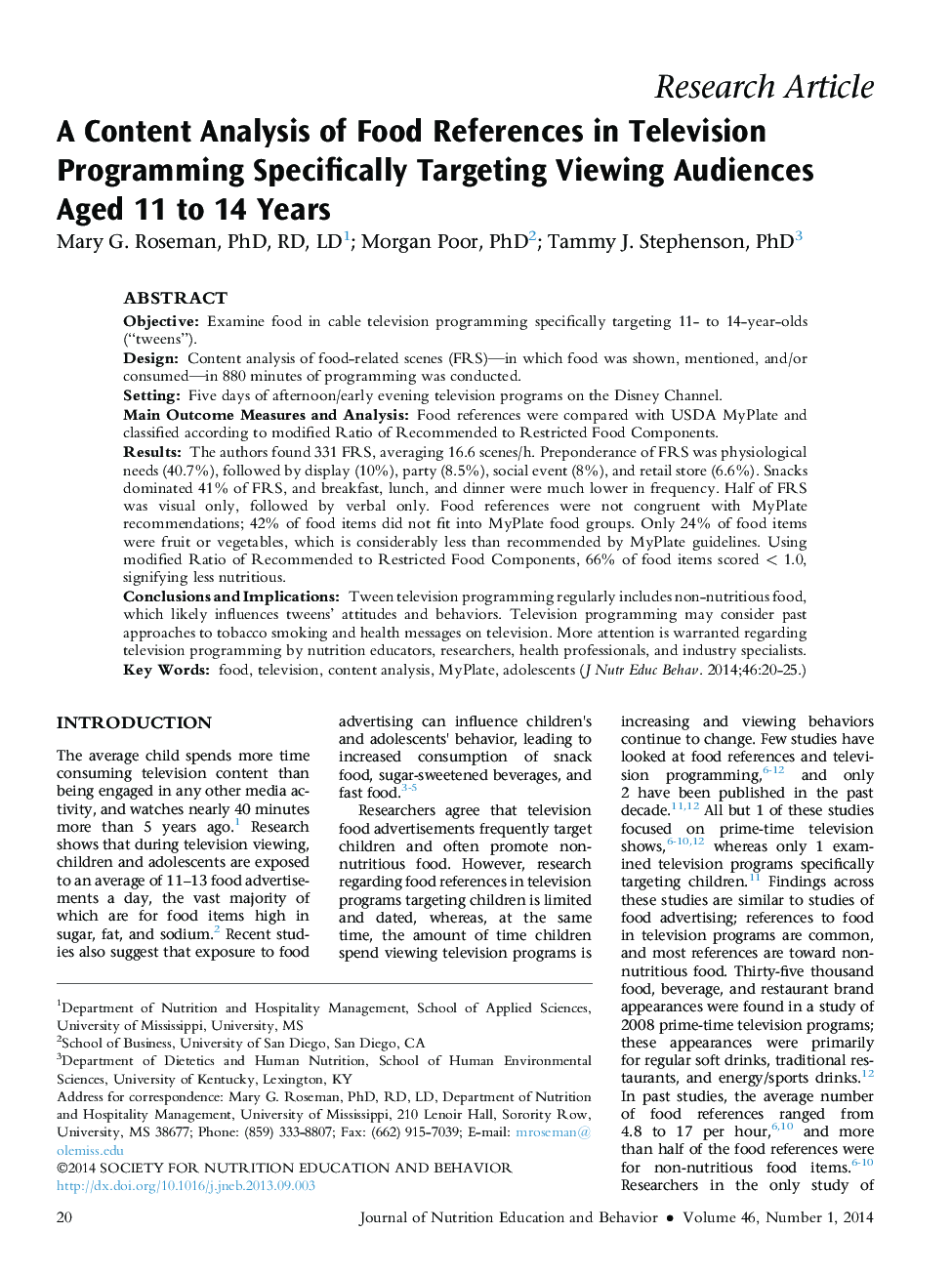| Article ID | Journal | Published Year | Pages | File Type |
|---|---|---|---|---|
| 361500 | Journal of Nutrition Education and Behavior | 2014 | 6 Pages |
ObjectiveExamine food in cable television programming specifically targeting 11- to 14-year-olds (“tweens”).DesignContent analysis of food-related scenes (FRS)—in which food was shown, mentioned, and/or consumed—in 880 minutes of programming was conducted.SettingFive days of afternoon/early evening television programs on the Disney Channel.Main Outcome Measures and AnalysisFood references were compared with USDA MyPlate and classified according to modified Ratio of Recommended to Restricted Food Components.ResultsThe authors found 331 FRS, averaging 16.6 scenes/h. Preponderance of FRS was physiological needs (40.7%), followed by display (10%), party (8.5%), social event (8%), and retail store (6.6%). Snacks dominated 41% of FRS, and breakfast, lunch, and dinner were much lower in frequency. Half of FRS was visual only, followed by verbal only. Food references were not congruent with MyPlate recommendations; 42% of food items did not fit into MyPlate food groups. Only 24% of food items were fruit or vegetables, which is considerably less than recommended by MyPlate guidelines. Using modified Ratio of Recommended to Restricted Food Components, 66% of food items scored < 1.0, signifying less nutritious.Conclusions and ImplicationsTween television programming regularly includes non-nutritious food, which likely influences tweens' attitudes and behaviors. Television programming may consider past approaches to tobacco smoking and health messages on television. More attention is warranted regarding television programming by nutrition educators, researchers, health professionals, and industry specialists.
